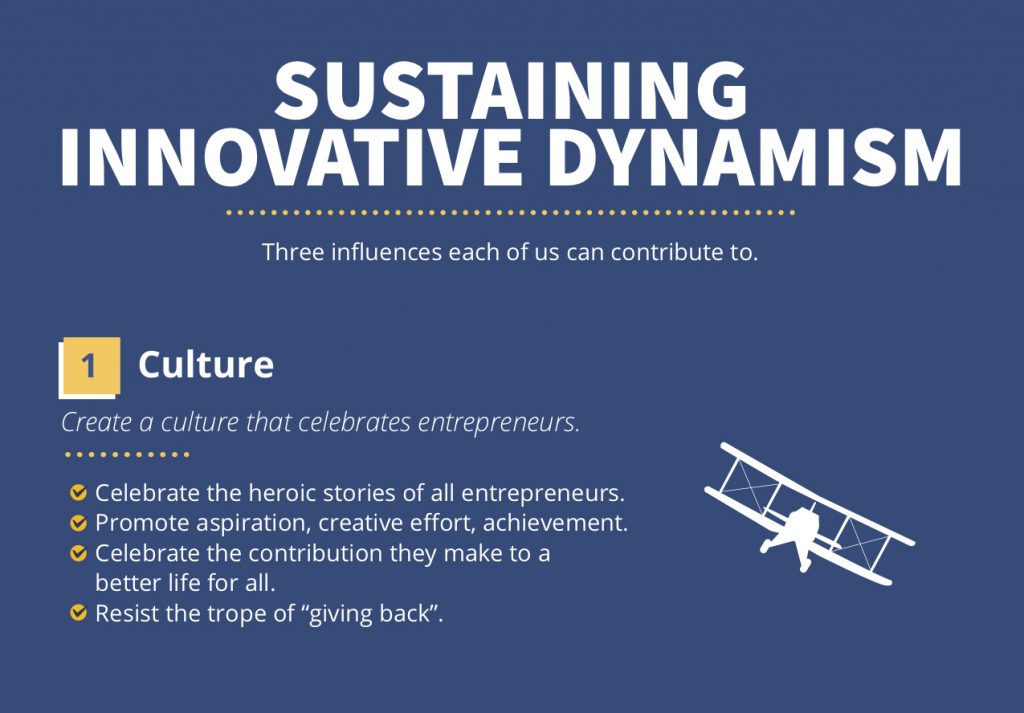36. Professor Arthur Diamond on Sustaining Innovative Dynamism
This week, while keeping our eye on our highest value – entrepreneurial success – we raised our focus to the system level and the meta-ideas that sustain entrepreneurial effort and Austrian innovative dynamism.
Key Takeaways and Actionable Insights
Professor Arthur Diamond has written a wonderful book about nurturing the system in which we entrepreneurs operate. The subtitle of his book is Sustaining Innovative Dynamism. Like all great writers in the Austrian tradition, he recognizes and celebrates the contribution of the entrepreneur to society: to make others’ lives better.
In many ways, this is both an economic and an ethical stance. To quote Jesus Huerta De Soto (in a similarly titled essay, The Theory of Dynamic Efficiency):
….the most just society will be the society that most forcefully promotes the entrepreneurial creativity of all the human beings who compose it1.
But Professor Diamond is a little bit concerned that the environment for entrepreneurial dynamism is under assault in the US. It’s up to all of us to work hard to sustain the system. Professor Diamond lays out the threats under three headings.
Culture
The entrepreneurial culture would celebrate the contributions of its entrepreneurs to a better life for all: prosperity, comfort, efficiency, health, personal achievement, and the human augmentation that comes with technology. Our lives are not only more prosperous, but more productive and more enjoyable, longer and healthier, thanks to entrepreneurs.
Often when we do celebrate entrepreneurs, it’s one hand clapping. Bezos, Musk, Gates and Jobs and others are recognized, but also sometimes vilified, and often judged on whether they “give back” – as if there was some guilt about their incredible contributions to human well-being.
And, Professor Diamond points out, a truly entrepreneurial culture would celebrate the lives of meaning and purpose led by entrepreneurs on every scale, from small business to big business.
We can all participate by celebrating the heroic stories of the entrepreneurial life, telling them loud and often.
Institutions
Under this heading, Professor Diamond focuses on the law, private property and markets.
We can observe our legal institutions turning against entrepreneurs in the form of tort suits and punitive damages. Professor Diamond calls for reform to preclude unreasonable awards of damages, and points to examples where doing so has resulted in unleashing entrepreneurship (such as 7000 new doctor’s practices opened in Texas after a damages cap on malpractice cases was put in place).
Private property protection is fundamental to the economic freedom entrepreneurs exercise to bring the benefits of innovation to society. Government is always tempted to seize private property, and often succumbs to the temptation. We must publicize each instance and protest each time.
Markets are the institution that facilitate the entrepreneur’s presentation of new offerings, and the consumer’s freedom to choose from what’s on offer. We talked about matching venturesome consumers (early adopters) with venturesome entrepreneurs, and removing the barriers that often come between them (for example, in medical innovation markets).
Governance
At this point, Professor Diamond exhibits amplified animation, recognizing that government regulation is the greatest threat to entrepreneurship and innovative value creation on behalf of others. He’s angry. He discerns two types of anti-entrepreneur regulation. The first is regulation that is sourced in purportedly well-intentioned (but demonstrably wrong-headed) efforts to protect consumers or workers. Here, we must energetically point to the greater benefits that ensue from the exercise of economic freedom than from its constraint.
One particularly important example is medical innovation. Too often, the heroic efforts of medical entrepreneurs to alleviate pain and suffering are thwarted by FDA regulation.
The second kind of regulation is the overtly corrupt protection of industry incumbents and big business, lubricated by lobbying and political quid pro quos. Here, we must all be whistleblowers.
Key Takeaway
Maintain entrepreneurial energy at all times and spread it in all directions. Celebrate heroic stories at every scale. Educate the world on the ethical and moral superiority of the entrepreneurial society, as well as its prosperity and well-being. Denounce legal predators, regulation and protectionism. We must contribute to the development of the entrepreneurial culture, institutional framework and governance as much as we do to customer betterment.
Downloads & Extras
Sustaining Innovative Dynamism: Our E4E Knowledge Graphic
Entrepreneurial Stories For Young Socialists: Arthur Diamond tells Walt Disney’s story.
When New Yorkers Cheered The Wright Stuff: Arthur Diamond tells The Wright Brothers Story.
Openness To Creative Destruction: Sustaining Innovative Dynamism: Arthur Diamond’s book.
Visit Professor Diamond’s personal website and blog, and read his article on Innovation Unbound, which begins: Inventors and entrepreneurs are key drivers of innovations that result in improvement in human welfare.








Leave a Reply
Want to join the discussion?Feel free to contribute!